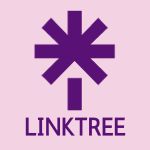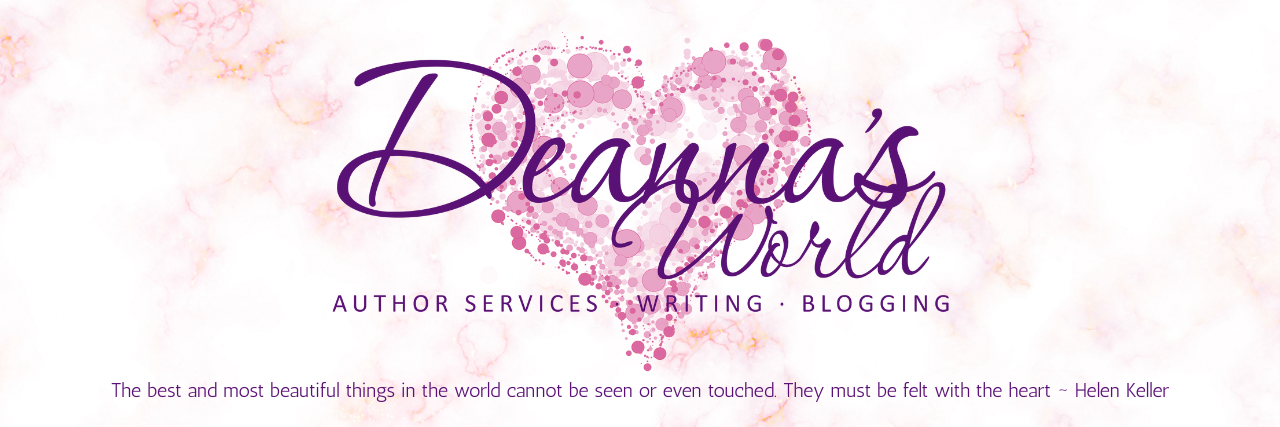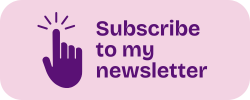
If you’re an author, your online world is likely flooded with well-meaning advice. You see the "Top 5 Marketing Tips," the "7 Steps to a Perfect Plot," and the endless "how-to" guides promising to unlock the secrets of success. But perhaps you’ve tried them and found they didn't quite fit. Or maybe you've felt a growing sense that a generic checklist, no matter how good, can't possibly solve the unique challenges of your career. If so, this article is for you. I’m not going to give you another list of tips. Instead, I’m going to pull back the curtain on why that model often fails and offer a more powerful framework: understanding your specific "What" and "Why" before you ever get to the "How."
There are some wonderfully generous people in the book world. You’ve seen them. I’ve seen them. They are the service providers, the editors, and the coaches who fill the internet with an endless stream of tips, tricks, and tutorials on how to write, how to plot, how to structure, and how to edit. And I appreciate each and every one of them. Their words often resonate with things I’ve learned over a decade in this industry, and to see them put it all into words is genuinely wonderful.
I get why they do it. It’s a way to prove their worth, to show potential author clients that they know what they’re talking about and what they’re doing. But my resistance isn't to generosity; it's to the potential for misdirection. I believe that giving an author a generic "how-to" guide can do more harm than good. The marketing strategy for a dark thriller is fundamentally different from that of a sweet contemporary romance; the readership for an epic romantasy has different expectations than the audience for a gritty urban fantasy. My value isn't in offering free advice; it's in ensuring the advice is relevant. Pointing a passionate author down the wrong path with a one-size-fits-all checklist is a disservice to their talent and their time.
Now, let me be clear. This isn't to say I've never worked for free. Far from it. In the early days, as I was transitioning from my corporate life and building my reputation as a publishing partner, my parents would constantly ask me why I was giving away advice for free, reading for free, and spending so much time helping authors without a contract in sight. But that work was always strategic. It wasn't about giving away my process; it was about building a personal brand and a reputation. It was an investment in relationships and trust. I was demonstrating my commitment and my eye for story, but the deep, bespoke work—the how of what I do—was always something different. That decade of hard work, of strategic pro bono services, is the foundation of my business today, where my clients come almost exclusively from word of mouth.
This brings me back to that core conflict. My past experience holds me back from the "give it all away" model and forces me to ask a question that feels almost heretical in today’s online world. What if this constant firehose of free information isn't actually building your value? What if it's slowly eroding it? What if, by giving away the "how" for free, you're not attracting your ideal client, but instead cultivating an audience that is conditioned to always expect a free recipe? Does it devalue the very expertise that you’ve spent years, or in my case, a decade plus, building? This is the thought that keeps me up at night, and it’s the bedrock of my entire business philosophy.
A Lesson Forged in the High-Stakes World of Consulting
My philosophy wasn’t born in a writer’s workshop or a creative retreat. It was forged in a completely different world: the intense, high-stakes environment of top-tier management consulting. Before I was a publishing partner, I was a consultant. My mentor was a partner first at Booz Allen Hamilton and then at KPMG. I cut my teeth at a boutique firm run by ex-Booz partners, which was later acquired by KPMG. I was part of teams that worked on massive transformation projects—the kind with eye-watering budgets and zero room for error. I’ve worked with German banks in New York, built a new bank from the ground up in Cambodia, and managed complex IT system implementations where confidentiality was so tight, I still can’t mention the clients by name.
In that world, you learn very quickly what your most valuable asset is. And it’s not your client list or your fancy PowerPoint decks. It’s your intellectual property. It’s your process. It’s your how.
The first and most important rule I was taught is brutally simple: you never, ever give away the "how."
This principle was the absolute bedrock of our business. We operated on a clear and powerful distinction between what we showed the world and what we delivered to a client. Think of it as the "What/Why vs. The How."
The "What" is identifying the client’s problem. It’s the deep analysis, the diagnosis of the pain point. It’s showing them, with absolute clarity, that you understand their world and the challenges they face. The "Why" is substantiating your approach. It’s the strategic vision you present, the case you build for why your proposed solution is the right one to solve their specific problem. The "What" and the "Why" are what you use to build trust and demonstrate your expertise. They are your white papers, your case studies, your marketing. They prove you know what you're doing.
But the "How"? That’s the secret sauce. The "how" is the detailed, step-by-step process for actually building and implementing the solution. It’s the proprietary knowledge, the bespoke plan, the complex series of actions that will turn that strategic vision into a reality. The "how" is what the client pays for. It’s the core of the engagement. It’s the engine, not the brochure. People hire you because they don't know the "how," and they can't do it themselves. Giving that away for free would be like a chef handing out the secret recipe to his signature dish to everyone who walks past his restaurant. It doesn't just devalue the dish; it devalues the entire restaurant.
From Boardrooms to Books
So how does this high-stakes consulting lesson translate to the world of books and authors? It’s not just an analogy for me; it is the entire operational model for my business. I bring that exact same consulting mindset to every single author I partner with. My role isn’t just to edit a manuscript or design a cover; it’s to act as a strategic consultant for an author’s career.
The "What/Why vs. How" framework is always in play. The "What" is understanding an author’s unique position: their career goals, their specific struggles, the nuances of their genre, and the expectations of their readers. The "Why" is outlining a strategic vision for them, showing them a clear path from where they are to where they want to be. This is the work I do upfront, the foundation of our partnership.
The "How" is the deep, collaborative, and completely bespoke work that follows. It's the meticulous line edits that preserve their unique voice, the project management that juggles a dozen moving parts for a launch, the marketing strategy tailored to their specific audience, and the emotional support required to navigate the rollercoaster of being an author. That is the work that happens inside the partnership.
This is why my approach to "content marketing" looks so different from many others in the industry. When you read an article on my blog—whether it’s a deep dive into Kindle Unlimited, a celebration of a client’s re-release, or a personal reflection on a career milestone—you’re not reading a "how-to" guide. You’re reading my version of a white paper or a case study. Those articles are designed to showcase my thinking, my strategic approach, and most importantly, the results my clients and I achieve together. They are the public-facing demonstration of the "What" and the "Why." They are my proof that I can diagnose a problem and chart a course.
And this is, I believe, profoundly better for the author. Because here’s the truth: a generic checklist can’t solve a specific problem. A blog post on "Five Ways to Market Your Book" is fundamentally useless if an author’s core issue is a weak blurb, a cover that screams the wrong genre, or a story that sags in the middle. Every author’s situation is unique. Their goals, their backlist, their writing speed, their personality, and their definition of success are all different.
A generic "how-to" guide is a blunt instrument when what you really need is a surgical tool. True, lasting value doesn’t come from a one-size-fits-all prescription. It comes from a bespoke partnership built on a deep understanding of an individual’s needs.
Partnership in Practice: The "How" in Action
Theory is great, but what does this actually look like in practice? My client portfolio is small and carefully curated for a reason: the "how" is never a one-size-fits-all package. It’s a dynamic, responsive collaboration tailored to the specific needs, personality, and career goals of the person I’m working with. The service is never a fixed menu item; it’s a bespoke partnership.
Let me show you what I mean by drawing on a few anonymous (a throwback from my consulting days!) examples.
Client A: The Self-Sufficient Strategist
This archetype represents several authors I work with. They are seasoned professionals, often with successful careers outside of writing, and they are perfectly capable of managing their own businesses. They don’t need someone to handle the basics. They need a high-level strategic partner—a peer who can offer expert guidance, pressure-test ideas, and serve as the final quality gate.
- Their Need: A trusted advisor to help them navigate specific career inflection points and to ensure their work is polished to the highest possible standard.
- My "How": For one such author, a hybrid with experience in both traditional and indie publishing, the "how" involved orchestrating the re-release of her backlist series. She had the rights back but felt a mix of excitement and trepidation. My role was to be her strategist and sounding board, helping her navigate the complexities of an indie re-launch, from cover concepts to marketing strategy, and providing the emotional support to quell the inevitable self-doubt. For another author with a deep background in IT, the "how" is different. His storytelling is authentic, but he needed an editor who could challenge him to elevate his craft. Our work involves deep line edits and spirited discussions about sacrificing technically brilliant passages that, while impressive, slow the plot. In both cases, my "how" is not to do the work for them, but to provide the critical feedback, strategic insight, and expert editing that allows them to execute their vision with greater confidence.
Client B: The Pure Creative Who Just Wants to Write
This client is a brilliant storyteller whose mind is a constant whirlwind of new ideas. Her passion is for her characters and the warm, inviting world she has created—a world so charming and full of life that even I want to book a ticket to visit. She wants to live in her story world, not in a project management spreadsheet. The business of publishing—the administrative tasks, the technical details, the marketing grind—drains her creative energy.
-
Her Need: Someone to make everything except the writing disappear.
-
My "How": With this author, my "how" is to become her entire publishing infrastructure and a creative co-conspirator. Our partnership is a seamless, joyful flow. We had immense fun mapping out the interconnectedness of her debut collection, ensuring that a character from one story might pop up in another, making her fictional city of Cliffside feel real and lived-in. We even have running jokes about the number of "meddling cats" that act as furry cupids in her plots.
From the moment she types "The End," I take over. While I am editing her latest collection of short stories—she’s got a couple more to add to the collection, we are already brainstorming her next full-length novel. My role encompasses the entire editorial and production process: coordinating with designers, writing blurbs that capture the "warm hug" feeling of her books, formatting for all platforms, and handling the launch. This frees her from the operational burden, allowing her to do what she does best: move immediately and joyfully into writing the next story. My "how" is to serve as her full-service operations manager and creative strategist, turning her prolific imagination into a steady stream of published works.
Client C: The High-Powered CEO & Fellow Control Freak
This partnership is one forged over a decade, built on a foundation of mutual respect between two very similar, Type-A personalities. This client is the CEO of her incredibly successful author business; she is a perfectionist, an overachiever, and, like me, a self-confessed control freak.
- Her Need: A trusted second-in-command who understands her vision so deeply that she can finally let go of some of the control she holds so tightly.
- My "How": Earning her trust took years. It started small and grew as I proved I could not only get the job done but also meet her exacting standards. My "how" is not to be a "yes woman." Our relationship is defined by healthy debate and a shared desire to create the best possible book. Today, I am her operational right hand. I’ve internalized her specific brand and style to the point where I can manage her website, newsletter, reader community, and the torrent of graphics she needs with minimal oversight. Because she publishes more books than any other client—sometimes eight or even eleven in a single year—her schedule is the first one I lock in during our annual planning sessions. She can throw anything at me, from a surprise release to a last-minute idea, and trusts that I will catch it. She knows I will manage the day-to-day business and fiercely protect her privacy, allowing her to focus on being the creative force behind her empire. My "how" is to be the business administrator she can rely on implicitly.
Three different authors, three completely different partnerships. The services are wildly different, but the core principle is identical: a deep, strategic partnership focused on achieving that specific client’s goals.
Partnership Over Prescription
If you take only one thing away from this, let it be this: my job is not to sell you a generic recipe for success. There are thousands of blog posts, courses, and checklists out there that promise a one-size-fits-all solution to the challenges of being an author. But as we’ve seen, from the high-stakes world of corporate consulting to the deeply personal journey of publishing a book, a generic prescription can never truly solve a unique problem.
A downloadable guide can’t understand the nuances of your author brand. A standard checklist can’t help you navigate the emotional terror of re-releasing a book you love. A simple service provider can't become a trusted sounding board who helps you find the confidence to elevate your craft. These outcomes are not born from transactions; they are forged in partnership.
The real value I offer isn't a task list or a service menu. It is a dynamic, consultative approach that adapts to your specific needs, your unique strengths, and your personal vision for your career. It’s about taking the time to understand the "what" and the "why" before we ever get to the "how." It's about providing the exact right kind of support, whether that means acting as a high-level strategic advisor, a full-service operations manager, or a trusted business administrator who knows your brand as well as you do.
This is the profound difference between a service provider and a strategic partner. One executes a task and checks a box; the other invests in your long-term success and helps you build a sustainable, fulfilling career. One gives you a map; the other gets in the car and helps you navigate the journey, no matter how many unexpected detours arise. This is what it means to be a true publishing partner.
So, while I don't offer generic checklists, I absolutely do invest my time upfront for any author seriously exploring a partnership. This initial investment is where we build your "What" and "Why" together. It starts with me reading the first chapter of your work to assess not just the writing, but your voice and vision. It then culminates in a video call. I firmly believe a true partnership is built on connection, and seeing each other face-to-face is the first step in building that trust—even for the most introverted among us. This entire process is my investment in you. It is a bespoke diagnosis, not a free sample, designed to ensure that if we move forward, the "How" we build is tailored perfectly to you.
As you reflect on your own author journey, I invite you to ask yourself a few questions. What parts of the publishing process truly energize you, and which parts consistently leave you feeling drained or overwhelmed? When you look at your career, do you see a clear, long-term strategy, or does it feel more like you’re just trying to get through the next launch? Who is in your corner—the person you can turn to for an honest, expert opinion when you’re facing a tough decision? And most importantly, are you building the sustainable, fulfilling author career you first dreamed of?
Let's Chat!
I'm always open to connecting with fellow authors, readers, and anyone passionate about the world of books. Whether you have questions about the publishing process, want to share your own experiences, or are simply curious about what a publishing partner can do, I'd love to hear from you. You can find me on my Facebook or Substack, drop me an email, or sign up for my newsletter to stay updated on publishing insights, industry trends, and general book chat—I love chatting about books! And, of course, I always enjoy hearing your thoughts in the comments below.
FOR SOME FUN BOOK STUFF...
Find me everywhere:








No comments:
Post a Comment